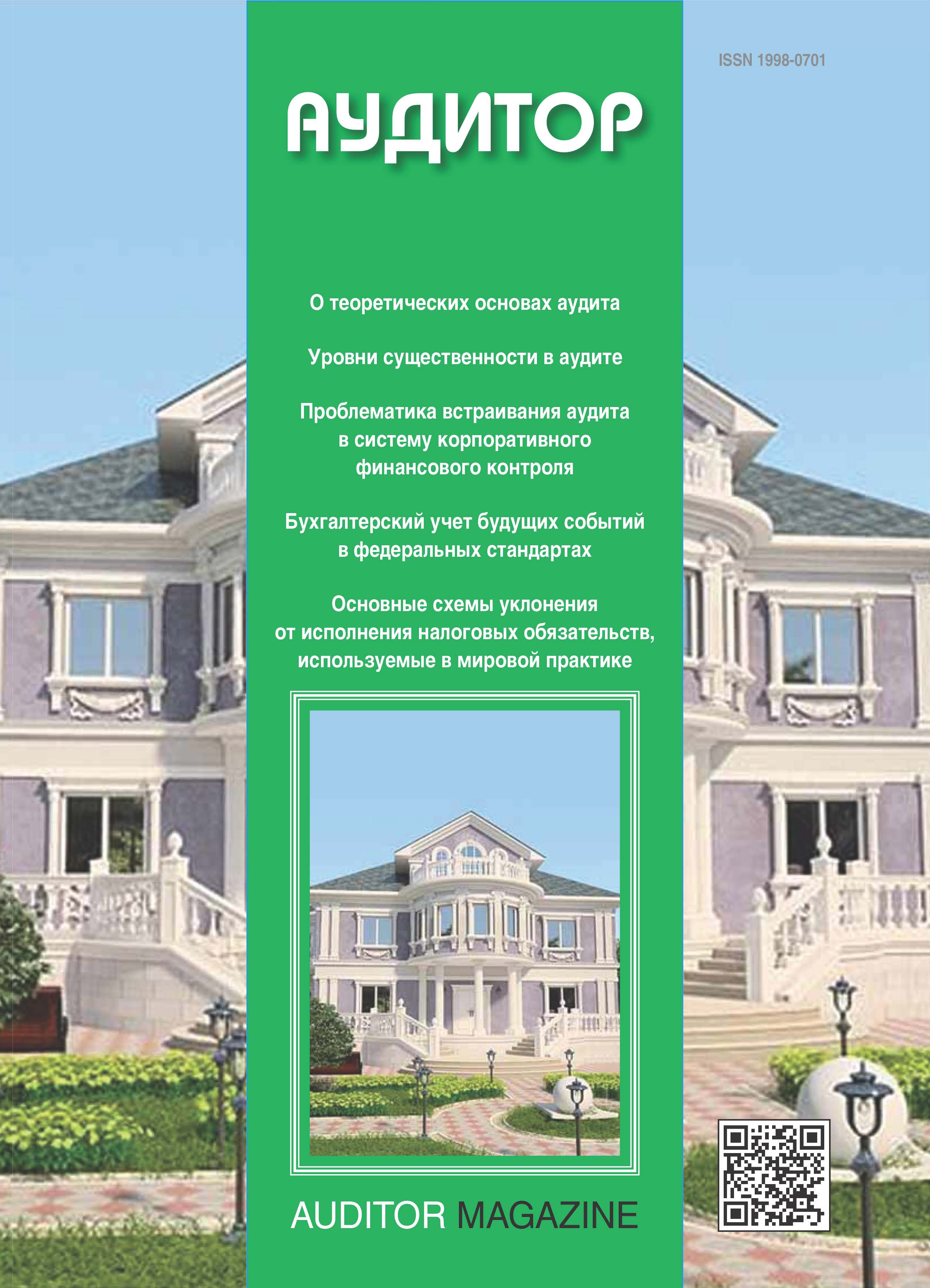BISAC BUS003000 Auditing
Th e author’s methodology for assessing the propensity to the risk of material misstatement of fi nancial statements due to fraudulent actions by those charged with preparation of the fi nancial statement of the audited organization is proposed on the basis of two behavioral characteristics − tolerance to violations of legislation and pathological monetary personality type. On the basis of a specifi ed econometric bivariate probit model, calculations are made on empirical data from a survey of employees of the audited companies conducted by the authors. Using the results in the working audit documentation at the stage of preliminary planning of the audit will assess the likelihood of the propensity of the organization’s management to economic risk.
the risk of material misstatement, fraud, bivariate probit model, audit, tolerance to violations, pathologically monetary personality type
1. Amzel't A.G. Analiticheskie procedury dlya vyyavleniya riskov suschestvennogo iskazheniya vsledstvie nedobrosovestnyh deystviy//Auditor. 2013. № 12. S. 22-26. EDN: https://elibrary.ru/RREZRJ
2. Fernam A., Argayl M. Den'gi. Sekrety psihologii deneg i finansovogo povedeniya. SPb.: Praym-Evroznak, 2006, 480 c.
3. Ameen E. C., Strawser J. R. Investigating the use of analytical procedures: An update and extension// Auditing: A Journal of Practice & Theory. 1994. Vol. 13(2), pp. 69-76.
4. Asare S. K., Wright A. M. The effectiveness of Alternative Risk Assessment and Program Planning Tools in a Fraud Setting // Contemporary Accounting Research. 2004. Vol. 21(2), pp. 325-352.
5. Beneish M. D. The Detection of Earnings Manipulation // Financial Analysts Journal. 1999. Vol. 55 (5), pp. 24-36.
6. Hirst D. E., Koonce L. Audit analytical procedures: A field investigation // Contemporary Accounting Research. 1996. Vol. 13 (2), pp. 457-486.
7. Knapp C. A., Knapp M. C. The effects of experience and explicit fraud risk assessment in detecting fraud with analytical procedures // Accounting, Organizations and Society. 2001. Vol. 26 (1), pp. 25-37. EDN: https://elibrary.ru/DYAJDD
8. Mitchell T. R., Mickel A. E. The meaning of money: An individual-difference perspective // Academy of Management Review. 1999. Vol. 24(3), pp. 568-578. EDN: https://elibrary.ru/DCTUCD
9. Morrell D. An In-depth study into behavioral auditing − its use in giving indication of potential fraud. Unpublished Doctoral thesis, City University London, 2010.
10. Roxas M.L. Financial Statement Fraud Detection Using Ratio and Digital Analysis // Journal of Leadership, Accountability and Ethics. 2011. Vol. 8(4), pp. 56-66.
11. Shelton S. W., Whittington O. R., Landsittel D. Auditing firms’ fraud risk assessment practices // Accounting Horizons. 2001. Vol. 15(1), pp. 19-33. EDN: https://elibrary.ru/DKTPEX
12. Trompeter G., Wright A. The world has changed - Have analytical procedure practices? // Contemporary Accounting Research. 2010. Vol. 27 (2), pp. 669-700.
13. Trotman K. T., Simnett R., Khalifa A. Impact of the type of audit team discussions on auditors’ generation of material frauds // Contemporary Accounting Research. 2009. Vol. 26(4), pp. 1115-1142.
14. Trotman K. T. etc. Triangulation of Audit Evidence in Fraud Risk Assessments // Accounting, Organizations and Society. 2012. Vol. 37 (1), pp. 41-53.






